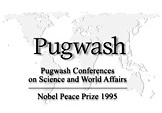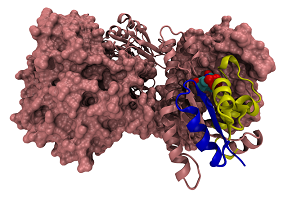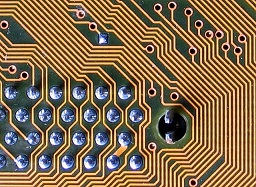Mankind has become cleverer all the time. Cleverness that manifests itself in subtlety: in order to arrive at a desired goal, we need less and less energy and resources. Fortunately so, because our planet can hardly sustain our growing wealth. We even need to become cleverer and more subtle.

Smaller is better
This movement towards subtlety is firmly rooted in a broad spectrum of technological developments. Almost all technical areas move towards smaller equipment, with less use of materials and energy, with a lower environmental footprint. But the social and political consequences of this development – more control at the local level, less centralized infrastructure – still meets with much resistance. As if scale increase and civilization were indissolubly interlinked.
With regards to energy, Amory Lovins and the Rocky Mountain Institute have held for years already that the future of supply lies in the smaller scale. They have been ridiculed or ignored – but actual developments show again and again that they are right. The energy intensity of the economy (the amount of energy required to produce one dollar of economic commodities) gets lower each year. Expressed the other way around: each year we succeed in creating more wealth from one dollar of Euro spent on energy. And the scale of energy production diminishes; i.e. energy is increasingly produced in smaller units, on a mass production basis. The reversal of long-standing trends.
 Bigger used to be better
Bigger used to be better
In the period after World War II, until ca. 1970, energy intensity figures as a measure of progress. Bigger and more energy intensive is better. People predict that we are going to extract unlimited amounts of cheap energy from nuclear power stations. But even then, there is a counter current. In the 1950s, the Pugwash Committee, with many atomic scientists, mounts an opposition to nuclear weapons. From 1969 onwards, the Union of Concerned Scientists takes a critical stand on nuclear power. Accidents that release radioactive substances appear to be the weak point of nuclear power stations; the main source of opposition. But an internal development turns out to be even more harmful. In order to prevent costs to run out of hand, nuclear power stations need to be scaled up, and this gives them the final blow. They become too expensive. And notwithstanding economies of scale, costs keep on rising. Whereas energy demand grows much less than expected – because the production of one dollar of economic goods requires less and less energy. Around the world, nuclear industry bogs down.
Towards subtlety
In chemical science and technology, we witness the opposite movement. A movement towards subtlety, towards reactions with lower energy effects. We can track this down in the development of this science. In the early years (end 18th and early 19th centuries), most reactions are stoichiometric, i.e.: they require much energy, and particularly many auxiliaries. In the 20th century, catalysts make a breakthrough: substances that do not take part in the reaction, but that do facilitate them or speed them up. This form of chemo catalysis peaks in petro chemistry, processing oil into useful chemicals. A technology that does require high temperatures however.

Then, from the early 20th century onwards, scientists discover to what extent living organisms use biocatalysis in their processes – at low temperatures. Enzymes control all subtle chemical processes in our bodies. Biochemistry, the science of these processes, develops very rapidly after 1950. Then, many auxiliary techniques come to its help like chromatography, X-ray diffraction, NMR spectroscopy and electron microscopy. The energy effect of biochemical processes is much lower than that of inorganic and organic processes. They involve much more complicated structures and result in much more precision. Chemical processes evolve from large to small amounts of energy transfer, with mounting precision; an increase in subtlety. And surprisingly, biochemistry facilitates much better results, including industrial results. Moreover, biotechnology and DNA transfer still hold many promises for the future (remember CRISPR-Cas). So many promises, that in the future the trip to the hospital will cost more than the subtle manipulation of our proteins that will relieve us from a hereditary condition. The end of this development is not in sight by far.
In physics, too
Meanwhile, there is a comparable movement towards subtlety going on in physics. Low-voltage technology takes over the first place from high-voltage technology. All our computers and signalling and control devices make use of microelectronics, that runs on very weak currents. And miniaturization is still going on in these areas: chips still grow in the number of integrated circuits. And the field of nano-electronics has evolved now, operating on the nano scale. This development too is still far from completion. On top of that, after chips that operate on currents, photonic chips are in development that run on light signals. They are smaller and more powerful once more, and they use even less electricity.

The field of electricity generation clearly shows similar developments. Still, much electricity is being generated in centralized ‘power stations’ (on fossil or nuclear fuels) with a rated power of several hundred MWs. Electricity is then transported to users through high-voltage cables. But scale is decreasing. Power stations are being substituted by wind turbines and solar panels. Wind turbines will not grow much larger than 10 MW. In the future, we will witness the advent of small wind turbines that generate low-power electricity for local use. Solar panels are rated a few kW each. They can be clustered to form solar parks of a few MWs. But rooftop solar might function even better. A few panels can generate much low-voltage electricity for an increasing number of functions. Some modern houses are now being equipped with a dedicated local low-voltage system that powers all sensors. Moreover, with rooftop solar we can even out much of the disparity between production and demand. Such an evening-out is the central issue in the combination of an intermittent energy source with an intermittent demand. And in the future, we will witness the lithium-ion battery that directly charges on sunlight – it is there already (in the lab). It will do away with the need to use a solar panel.

More subtlety
And we could even do without a battery. Why generate electricity at the MW scale for use in sensors that require mWs, one billion times less? It would be a much better idea to tune generation and demand to each other, in this area as well. We can do that, using piezo electricity. This technique will transform minute vibrations into minute currents, precisely what our sensors require. For instance for safety equipment alongside railways or highways. Or for public lighting, on the energy of footsteps. In this area as well, subtlety will defeat brute force. Even 10 MW wind turbines might be challenged by wind energy generated by the piezo effect. We could clad our high-rise buildings in piezo electric carpets and solar cell foils, right next to the centres of electricity demand, our kitchens and living rooms. Hobbyists could mount micro hydroelectricity units in drainpipes or sewers. Then all of a sudden, all those small currents taken together could solve the macro problem of energy supply and storage. Utopic fantasies? They might rather be realistic predictions – because the power of subtlety has by far not been researched completely.
Written together with Alle Bruggink
Interesting? Then also read:
The silent miracles of energy efficiency
Doughnut economics, or why economists should learn more about technology
Piezoelectricity, for a world using less resources
